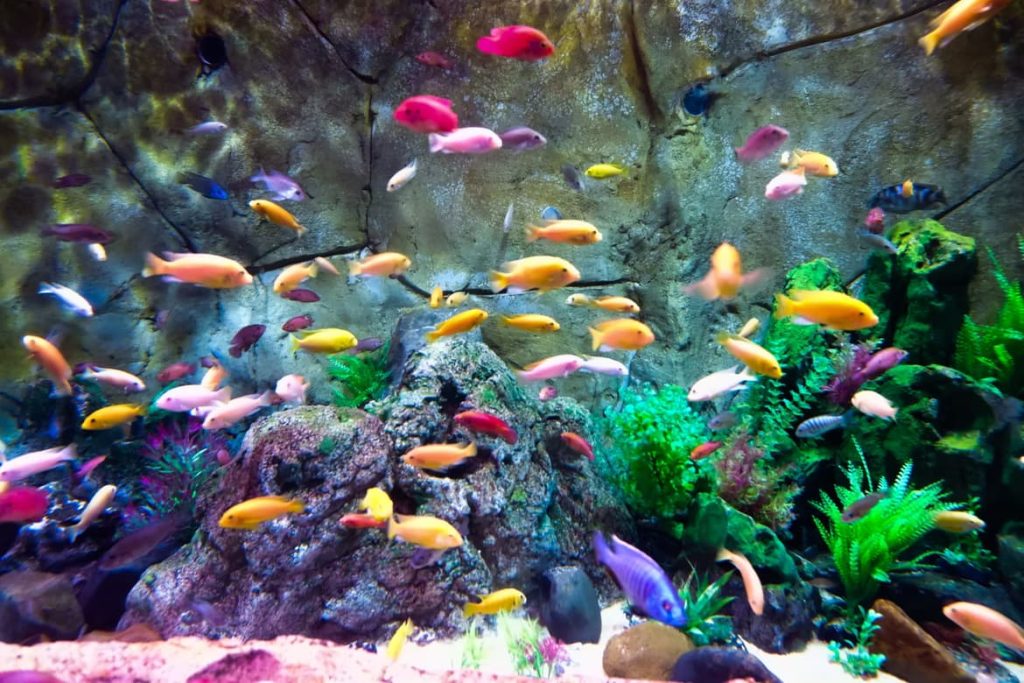During summer heatwaves, most people are aware that they must offer a cool environment for their cats and dogs, but what about fish? Even if your fish are in the water, they are still susceptible to the effects of high temperatures.
During the summer, if there is a power outage or no air conditioning, the aquarium water may heat up to dangerous levels for the fish. In these uncommon situations, it’s critical to know how to chill the aquarium water. As a result, here are some pointers to help you keep your aquarium cool in hot weather.
Table of Contents

First Signs of Trouble
Rapid gill movement or gasping for breath at the surface are the first signs of problems in your fish during hot weather. Due to a bloom of heterotrophic bacteria, algae growth may accelerate and the water may become hazy.
Your fish’s immune systems are weakened when they’re stressed, and they’re more prone to become ill. In severe circumstances, your filtering system may not perform as well as it should, resulting in dangerous ammonia and nitrite levels rising.
Aquarium Chiller
An aquarium chiller is a miniature refrigerator that is connected to an external filtration system and used to cool (or chill) the water as it goes through it. When used in conjunction with a thermostat, the chiller can keep the aquarium temperature from increasing over a certain point.
This is particularly critical when keeping cold-water fish or temperate-water species such as goldfish in a hot area. You may learn more about the many types of aquarium chillers available, as well as how to ensure that your chiller is properly set up and working and that your aquarium maintains a consistent temperature.
To get the ideal chiller, you’ll need to know the dimensions and size of your aquarium, as well as the temperature that has to be reduced to keep it at its best. Once you’ve finished shopping, just place it in the sump or connect it to your tank’s plumbing. This is a sure-fire way to combat the summer heat, and you can use it in conjunction with your heater to regulate the temperature variations in your room.
Keep the Safe Temperature
Based on its native habitat, each fish species has its unique requirements for water temperature. Fish from tropical climes prefer warmer water than fish from hilly areas. You do not need to be afraid as long as the water temperature does not exceed 30 degrees Celsius.
The dissolved oxygen in the water, on the other hand, diminishes when the temperature rises. It’s unlikely that you’ll have an issue if you have a decent filtering system. Nonetheless, increasing aeration to guarantee optimum oxygen levels won’t hurt. You should also replace the water more frequently, using water that is a few degrees colder than the tank water. This will help to keep the water temperature cool and ensure that your fish get enough oxygen.
Tips for Lowering the Temperature
Here are some ideas for keeping the water cold and ways to bring it down if it becomes too hot.
- Turn off the lights in the aquarium.
- Make sure there is no direct sunlight in the room.
- Remove the hood of the tank and set it aside.
- A fan should be positioned so that it blows straight across the water.
- Place ice packs in the water and float them.
Turn Off the Lights
Simply sliding your hand below the lights will reveal whether or not your light is emitting heat. If you feel warm, it’s because your light is creating heat, which is what’s causing the temperature in your aquarium to rise. As a result, you should turn off the lights in your aquarium in this instance. If you have a planted aquarium, you should first research how much minimum light your aquarium’s plants require. Once you’ve figured it out, you should turn on the lights for at least a few hours. If your aquarium lights include a feature that allows you to dim the light, you should make use of it.

Turn Off the Heater
Make certain that your heater is set to the temperature you desire in your aquarium. If the temperature in your aquarium is still too high, you should lower the heat.
It is important to remember that you should not turn off or unplug your heater at this time because it might create a rapid dip in your aquarium’s water temperature, which can upset your fish. It can potentially lead to additional issues, such as irritation in your fish or parasite infection. Keeping the room where your aquarium is placed cold is also a good technique to keep the temperature of your aquarium down.
Summer is pleasant for most of us, but if you have an aquarium and don’t have air conditioning, lengthy periods of excessive heat may be dangerous, if not deadly for your fish. The effects of increased temperature on fish vary depending on tank size, depth and surface area, fish population, water quality, circulation and surface agitation, and ambient room temperature. Hopefully, these suggestions will assist you in maintaining the right temperature in your aquarium, ensuring that your fish remain healthy and happy.

